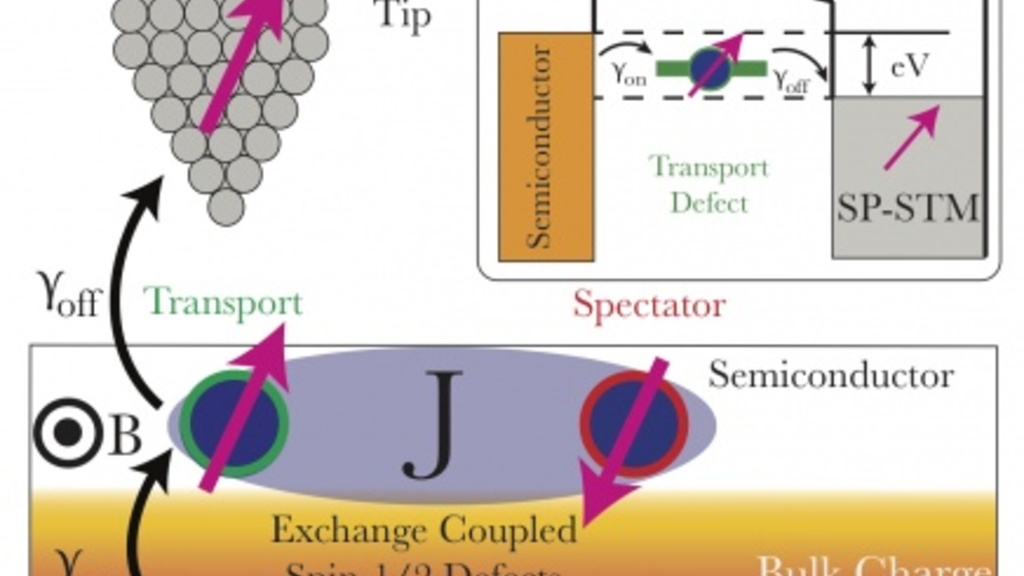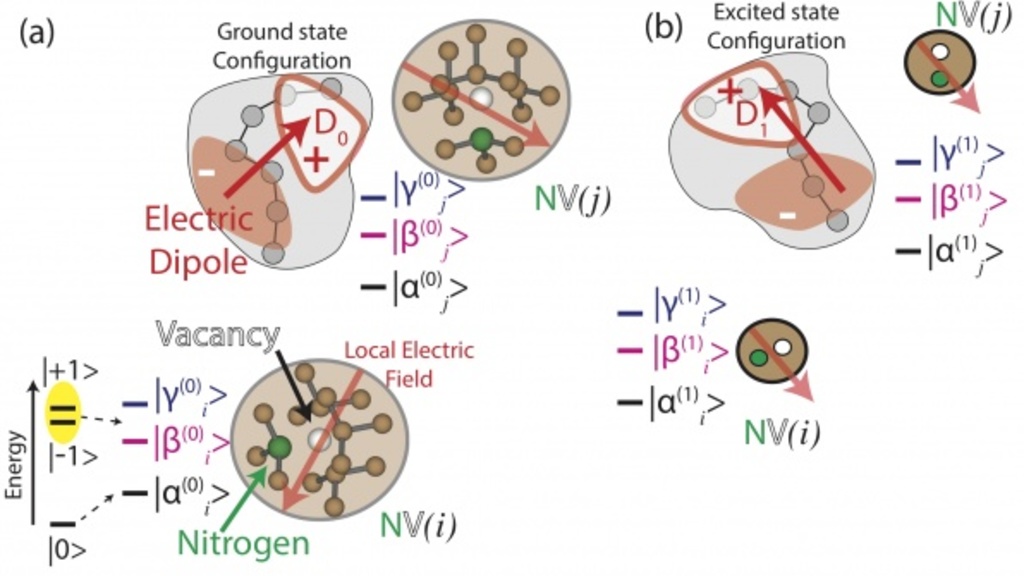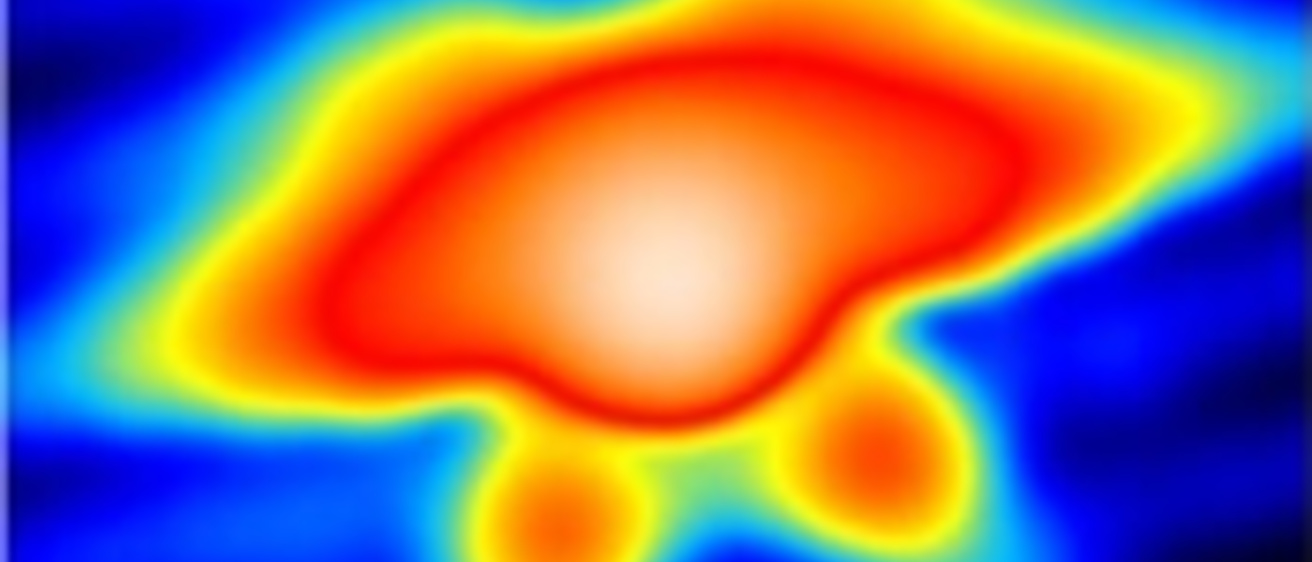Spintronics
-
Domain Walls
-
Single Spins
-
Spin Transport
-
Strong magneto-optical coupling
-
Quantum Computation
Carrier Dynamics
- Dopants in Superlattices
Electrochemistry
- Nanoplasmonics
- Stark shifts
![Schematic view of the strong quantum-coherent coupling between NV-center spin and magnon mode. The green disk represents the normally magnetized V[TCNE]x ferrimagnetic material placed on top of a diamond [111] substrate possessing NV centers.](/sites/frg.physics.uiowa.edu/files/styles/widescreen__1024_x_576/public/2021-11/FIgure1-400x213.png?h=75d64228&itok=OFtLg122)
High-cooperativity quantum transduction predicted between solid-state spin centers and magnon modes
Spin center defects in insulating materials, such as nitrogen-vacancy (NV) centers in diamond, have emerged as potential stationary qubits within a solid-state platform for quantum sensing, communication and information processing. Efficiently creating entanglement between NV centers, or between NV centers and traveling excitations (flying qubits) remains a key goal for this system. The underlying challenge is the intrinsically weak coupling between NV centers separated by more than a few nanometers, due to the rapid falloff of exchange or magnetic dipolar couplings. If the NV centers are to be optically read out independently and simultaneously then at those micron-scale separations the coupling between these centers is negligible.

Image of dynamic local exchange interactions in the dc magnetoresistance of spin-polarized current through a dopant
Measurements of the spin excitations of individual atomic spins or small numbers of spins can be performed by measuring the energy threshold for inelastic tunneling processes from a scanning tunneling microscope (STM). These spin excitations depend on the exchange coupling among the spins. For this approach to work the temperature must be sufficiently low that a step increase in the tunneling current can be identified. Still other approaches to measuring interatomic spin interactions require microwave fields that place the spins into a resonant condition, permitting STM-mediated electron spin resonance. Under Department of Energy support, and in collaboration with Ohio State University, we have predicted new fingerprints of the DC spin-polarized current in an STM, in the complete absence of any microwave fields.

Single Photon Detection by a Photoreceptive Molecule and a Quantum Coherent Spin Center
The long spin coherence times in ambient conditions of color centers in solids, such as nitrogen-vacancy (NV−) centers in diamond, make these systems attractive candidates for quantum sensing. Quantum sensing provides remarkable sensitivity at room temperature to very small external perturbations, including magnetic fields, electric fields, and temperature changes. A photoreceptive molecule, such as those involved in vision, changes its charge state or conformation in response to the absorption of a single photon.
